From Hattori Station to Sunagawa Park
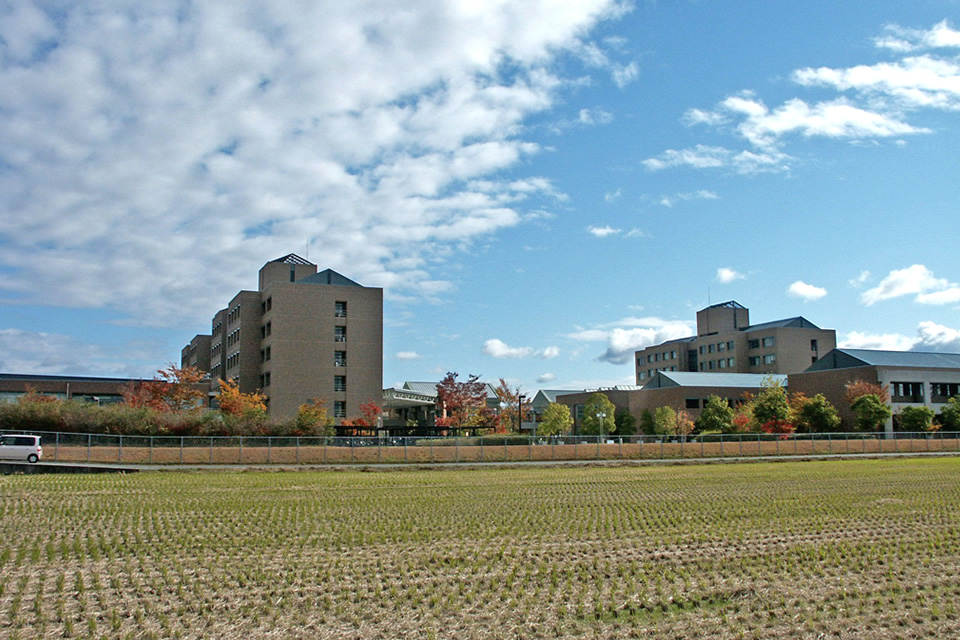
I get off at Hattori Station with several female students. It has been over a decade since Okayama Prefectural University was established in this area.
From Hattori Station, we head north and turn west under the elevated section of the Okayama Highway, then turn north at the next intersection, which leads to the road that continues to Sunagawa Park. On the summit of the northern mountains, you can see Kinojō (Devil's Castle). Along the way, we pass by greenhouses selling locally grown vegetables and persimmons, and then we arrive at Sunagawa Park.
Sunagawa Park

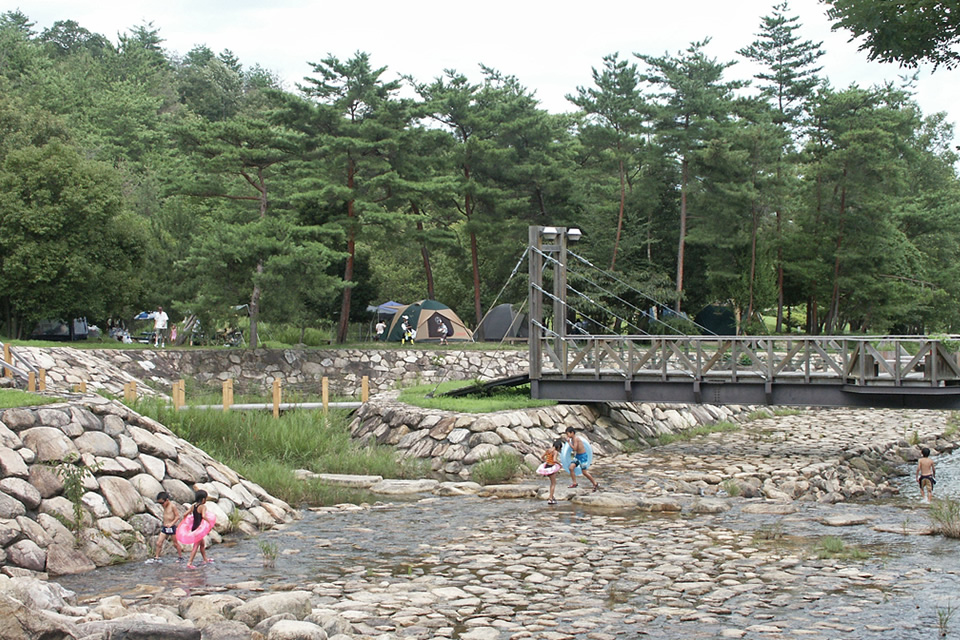
The entire area of Sunagawa Park is equipped with a public campground (for a fee) and is an ideal place for outdoor activities. I visited in mid-November, and the outdoor activity season had already ended.
This photo shows the campground in July, and you can see children playing in the water. In the early morning from April to June, you can hear the chirping of Japanese bush warblers, Japanese tits, Oriental Greenfinches, and other wild birds.
Water slide
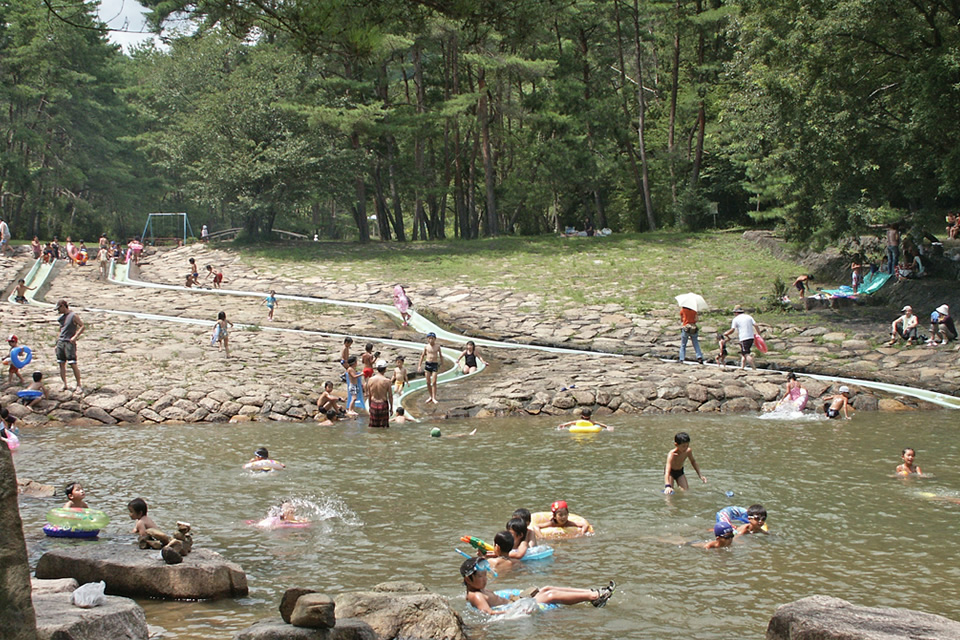
It is a water slide that utilizes natural rivers and ponds. During the summer, there are children who cheer while enjoying barbecues and water play.
Sunagawa Park and Sunagawa Forest are natural parks that have actively utilized reforestation and environmentally friendly embankments as measures against sand control. Here, you can get close to nature and enjoy activities such as getting familiar with water, listening to the songs of wild birds, interacting with the forest, and basking in the sunlight in a familiar setting.
Sunagawa Forest
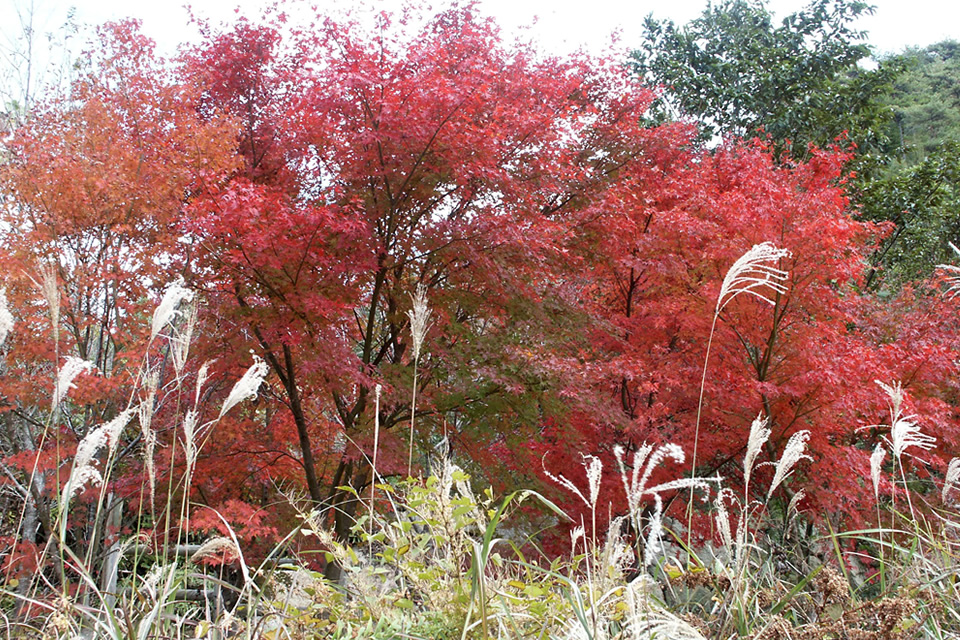
A short walk from Sunagawa Park brings you to a fork in the road. The right side leads to the Devil's Castle, but this time, we continue straight into Sunagawa Forest. On the left, there's a small sign indicating the entrance to the Sunagawa Forest walking trail. This path leads through the "Four Seasons Forest" trail and emerges at the "Interaction Square." Walking along the road, you'll pass the Sunagawa Forest parking lot and arrive at the "Interaction Square."
The "momiji" (Japanese maple) trees planted in the "Babbling Brook Forest" were beautifully adorned in vibrant red foliage. During this season, there are few visitors, making it a hidden gem for autumn foliage.
From Sunagawa Forest to Iyama Hōfuku-ji Temple
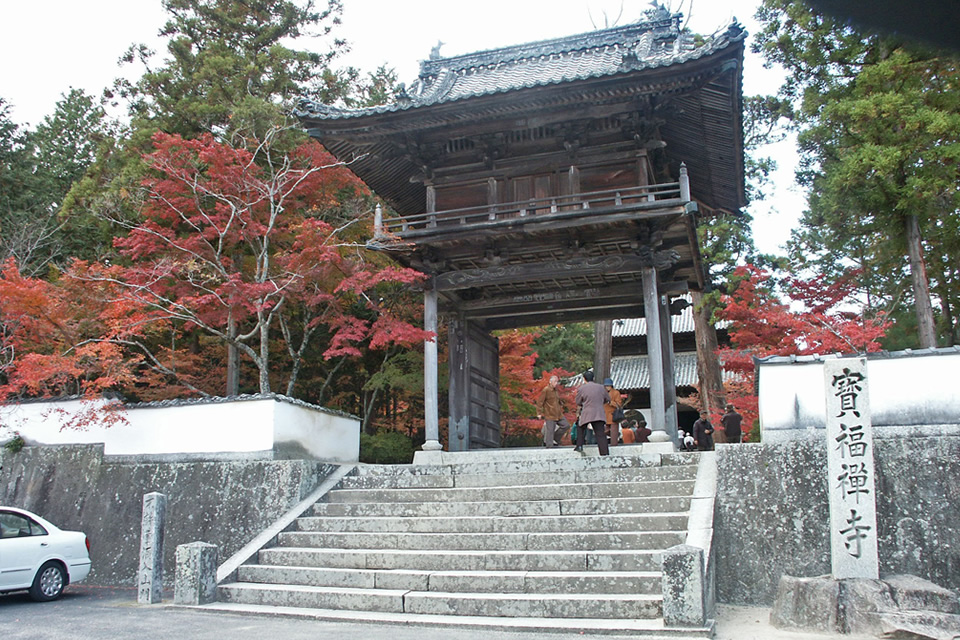
From Sunagawa Forest, if you go a little further, you'll find a golf practice range. From there, continue on a downhill road until you reach a T-junction. Turn right and proceed for about 70 meters, then turn left and climb up a slope.
Walk along a road that winds around the foot of Mt. Akiba for a while, and you will come to the top of Akiba Mountain Tunnel, where you can overlook the tracks of the Hakubi Line. Keep going straight on the road, and you will reach the rear parking lot of Hōfuku-ji Temple. Walk along the left side of the road and you will reach the main gate (Sanmon) of Hōfuku-ji Temple.
Hōfuku-ji Temple Buddha Halll
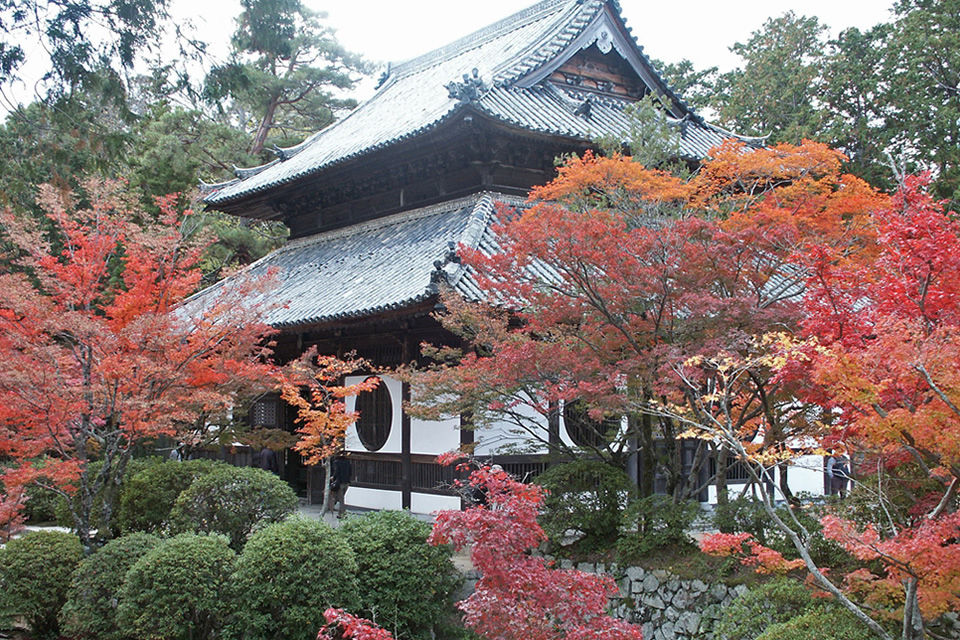
Hōfuku-ji Temple is a Zen temple of the Rinzai sect, affiliated with Tōfuku-ji Temple. During the late Muromachi period, it was devastated by the fires of war and, except for the three-tiered pagoda, was completely destroyed. It was then reconstructed to its current form during the mid-Edo period.
Normally, the temple grounds are a solemn and tranquil place. However, during the "momiji" (maple) season, the parking lot is filled to capacity, and security guards are directing traffic. On this Sunday, which was the peak of the autumn foliage, the temple grounds were filled with people enjoying the colors, taking photos, and couples strolling around, each person experiencing it in their own way.
The three-tiered pagoda of Hōfuku-ji Temple
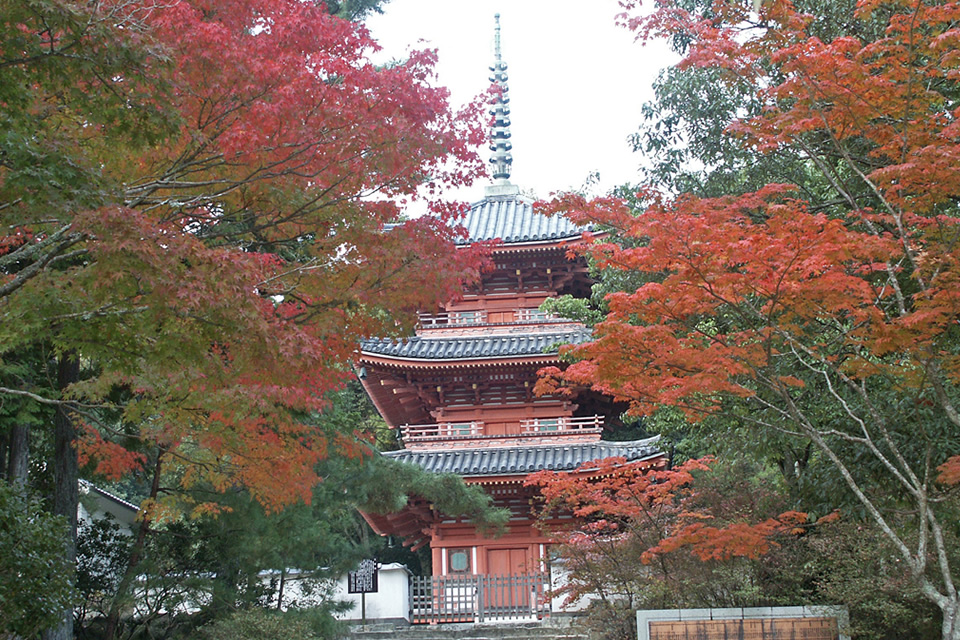
This three-tiered pagoda is said to be from the Muromachi period. It is known as the temple where Sesshu, a representative painter of the Muromachi period, trained during his childhood.
I have featured photos of the autumn foliage at Hōfuku-ji Temple on my website, so please take a look.
After leaving Hōfuku-ji Temple, take the road along the Hakubi Line southwards and return to Soja Station.
